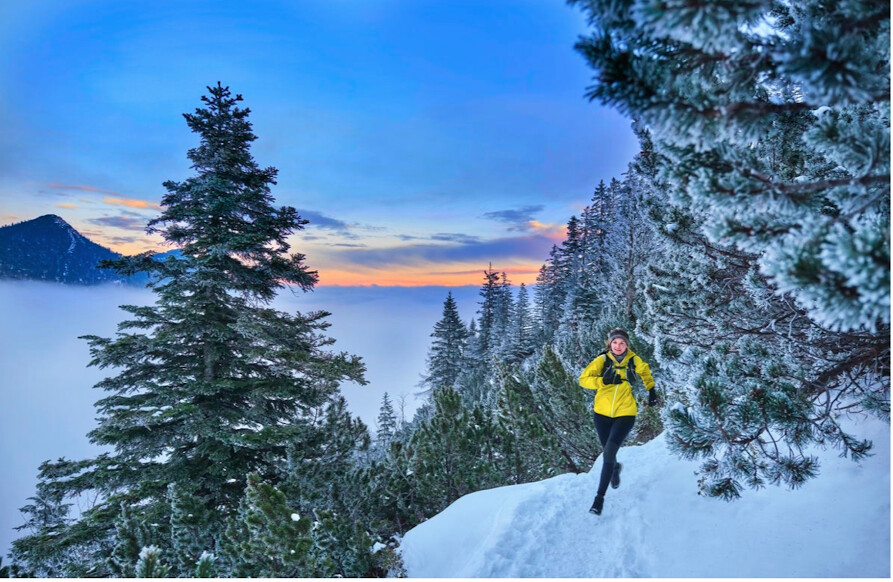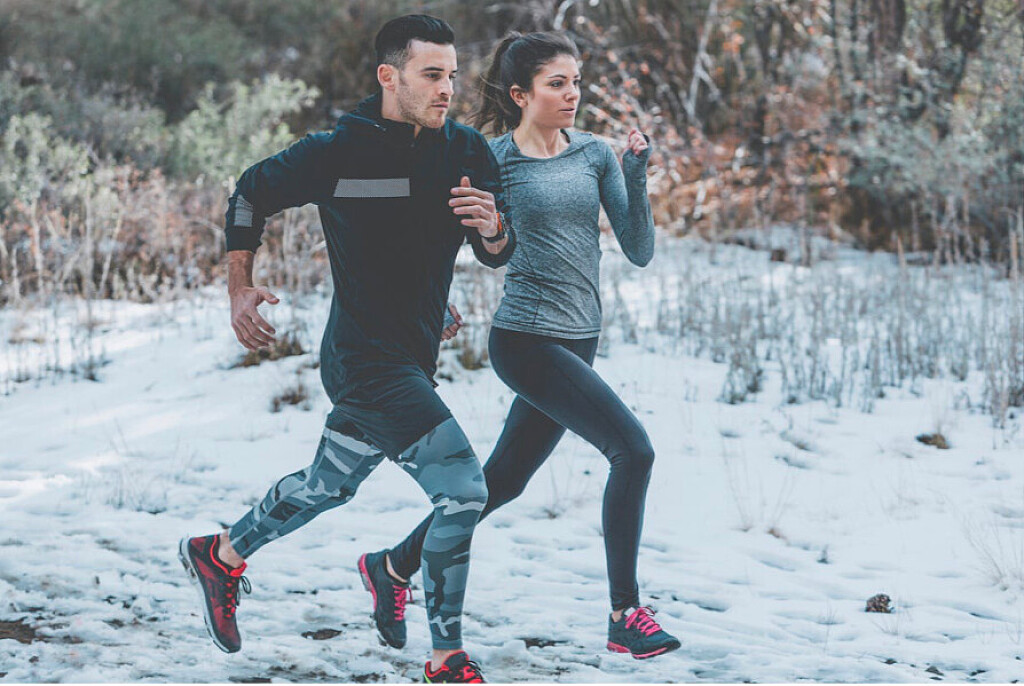Running News Daily
Running News Daily is edited by Bob Anderson in Mountain View, California USA and team in Thika Kenya, La Piedad Mexico, Bend Oregon, Chandler Arizona and Monforte da Beira Portugal. Send your news items to bob@mybestruns.com Advertising opportunities available. Over one million readers and growing. Train the Kenyan Way at KATA Running Retreat Kenya. (Kenyan Athletics Training Academy) in Thika Kenya. Opening in june 2024 KATA Running retreat Portugal. Learn more about Bob Anderson, MBR publisher and KATA director/owner, take a look at A Long Run the movie covering Bob's 50 race challenge.
Index to Daily Posts · Sign Up For Updates · Run The World Feed
The Importance of Not Getting Too Cold During Winter Runs
There is a man in my neighborhood in Boulder who walks his two yellow labs every morning. No big deal, right? That's just good dog ownership. But here's the thing that makes him the talk of the cul de sac: no matter what, he's wearing shorts. Whether it's rain or shine or snow or probably zombie apocalypse, he lets his shins breathe, as if he's a nudist from ankle to knee.
Apparently, that is a thing, as chronicled by the Wall Street Journal. I imagine that most of us look at always-shorts people and chuckle a bit, wondering what their deal is. Whatever their motivation, that's their prerogative-they are probably not risking much other than some discomfort. What's a much more worrying thing to me is seeing runners pass by our driveway seemingly underdressed.

It'll be 25 degrees F and windy, and someone passes by in short shorts. Or at 0 degrees F, they'll be in light tights. In training logs, I'll see people write comments like this: "Was freezing cold on my run today and couldn't warm up," or "Didn't feel my feet during the entire run."
Often, it's said as if it's a point of pride to demonstrate toughness in northern climates, like they're auditioning as an extra for the Game of Thrones finale. And sometimes, it coincides with a bad workout or an Achilles or foot injury appearing shortly thereafter.
So this article has a simple message. You can wear whatever you want when you run, but letting your body get too cold may increase injury risk and reduce performance, in addition to being way less cozy. Grab some hot cocoa, and we will go over the basics.
Cold muscles may have reduced maximal performance.
Go to run an all-out interval or race with cold legs and you might find yourself paraphrasing an old Seinfeld line to explain your performance: "If you think that's me, then you're under a complete misapprehension." A 2014 study in the Journal of Sports Medicine summarized that moderate cooling may influence maximal muscle performance. That study examined the shrinkage effect by having 16 participants submerge their lower legs in 10-degree-Celsius water for 20 minutes. The shin muscle generated reduced isometric maximum force and the calf muscle showed signs of fatigue. That study had a major caveat that activities at sub-maximal effort (like long-distance running) were not affected, but couched that finding with the idea that the cooling might not have been severe enough.
Other studies dig into the effect of cooling on muscle performance. A 2008 review article in Medicine and Sports Sciences summarized the slowed enzymatic processes and nerve conduction as temperatures drop, along with a likely reduction in local muscular endurance. In other words, a cold calf muscle may not operate as efficiently as a warm one, but where exactly that temperature threshold lies is up for debate. Meanwhile, reduced efficiency of motion was addressed by a 2004 study in the Gait & Posture journal (a fun drinking game would be to make up one journal name a week and see if you can guess it). Using force plates and other gait-measurement tools, that study found that extra-cold feet and reduced plantar sensation changed ground contact and push off.
And there are dozens more similar studies. The basic takeaway is that when local temperature in leg muscles drops below a certain point, max muscle power decreases, too, possibly due to nervous system responses, with too-low core temperature causing similar issues. The same may apply to biomechanical efficiency, which could impact running endurance and speed, though there is uncertainty and individual variability.
Cold muscles and joints may be at higher risk of injury.
This point gets back to the effects on the nervous system and proprioception (awareness of body position and movement). A 2002 article in the Journal of Applied Physiology found that repetitive work in the cold causes changes in electromyogram readings, indicative of increased fatigue. That's a fancy way of saying there are less efficient muscle contractions, which the study concludes creates a higher risk for overuse injuries. You could imagine a similar conclusion from the cold-feet study above, which found changed gait patterns (though the authors did not draw that conclusion). Other studies connect cold with joint stiffness that could impact range of motion. A 2014 master's thesis put it all together and found higher rates of injury per run in the winter than in the summer, a finding I have seen anecdotally in athletes over time, though that could be attributable to the slippery surfaces.
All of this comes with a big, steaming pile of disclaimers. First, the body generates a heck of a lot of heat during running. Core temperature is unlikely to drop far unless severely underdressed, but local temperature may be at risk depending on the intensity of activity and the conditions.
Second, cool temperatures are optimal for performance, as demonstrated by a real-world study in PLoS One that looked at millions of marathon results and found around 50 degrees F or a bit under to be a sweet spot. However, if some is good, more is not always better. In the rain, cold and wind of the 2018 Boston Marathon, the winning men's time was 2:16 and winning women's time was just under 2:40. In the 90-plus-degree day in 2012, the winning times were 2:12 and just under 2:32. That's just a snapshot with no statistical significance, but countless athletes complained of the cold sapping their energy as much as the headwind.
Third, everyone is immensely different in how they handle environmental conditions. Ignore this article if cold isn't a problem for you. Heck, you might have so much leg hair that it's like you are perpetually wrapped in a fuzzy blanket. Or you might have been born in Canada. Or both (that Venn Diagram probably has a lot of overlap).
No matter what, we can agree that being too cold is bad for performance and injuries, though how much work the word "too" is doing in that statement varies a lot. At the very least, you don't want frostbite. So how should you dress?
Ideally, you start the run bundled up so that you can raise peripheral temperature, followed by stripping down as needed after the body generates enough heat.
That mid-run striptease might not be possible for you, in which case it may be best to make sure your legs are warm, more than worrying about your upper body. Core temperature will increase in most conditions, so that puffy jacket can probably stay at home. But since we're worried about local temperature of the feet, ankles, shins, calves, knees and quads, it may be helpful to ensure that they are properly layered. Some essentials:
Good, preferably water-resistant socks. Winter socks can prevent some of the loss of feeling that may be associated with reduced efficiency.
Flexible running tights. They can serve as a base layer in almost all conditions.
A pair of light running pants. When tights aren't enough, the light pants on top can keep you warm down to rather frigid conditions (in my experience, that's down to around 0 degrees F wind chill, though everyone is different). Plus, they are easy and fun to strip if needed.
A pair of heavier running pants. I often recommend these without tights in conditions around freezing or just below. Over tights, they can keep you warm on most any day.
Below 0 degrees F, a thicker pair of tights might be needed for some people, or even more layers. Combine that with good gloves (or your favorite mittens), a hat that covers your ears, a Buff to cover your neck and a jacket, and you can handle most conditions. If possible, warming up your feet and lower legs under hot water or next to a heater pre-run can help avoid local muscle temperature dropping too far.
Or . . . you can just run on the treadmill. But that sounds like it makes for way fewer fun stories about snot icicles.
(12/04/2021) Views: 899 ⚡AMPby Trail Runner Magazine




